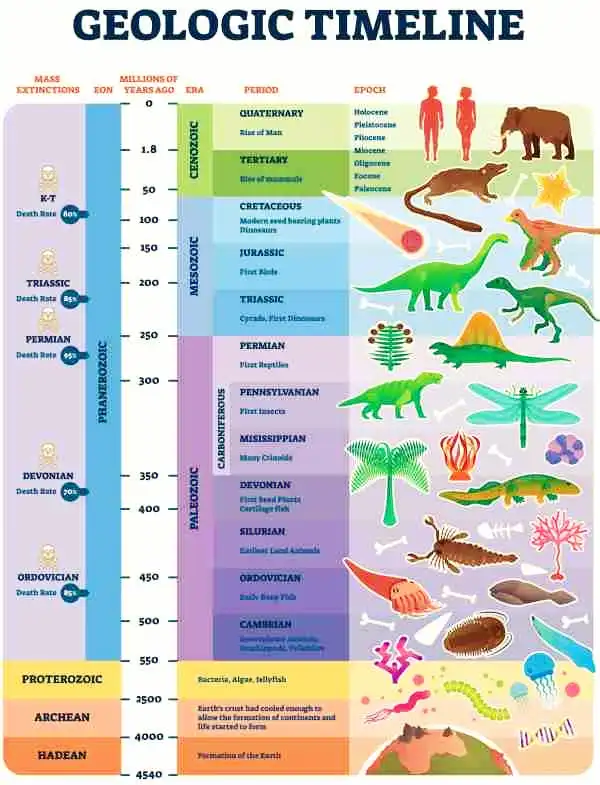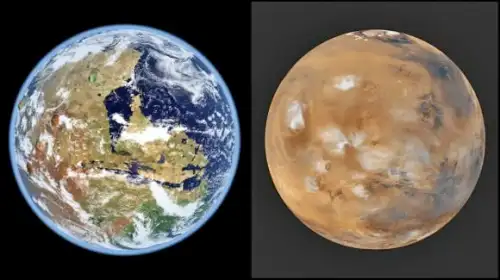Hypothesis of what existed before our civilization. We humans often take for granted our place at the pinnacle of technological development on Earth.
We are accustomed to living in settled societies, wielding tools, manipulating the landscape to suit our needs, and utilizing electricity, automation, and mass communication the hallmarks of an industrial civilization.
The common narrative holds that in the entire history of our planet, humanity stands alone in achieving this level of technical sophistication.
But what if, millions of years ago, another industrial civilization existed on Earth? Could we still find evidence of its passing in the geological record?
Hypothesis, intriguing question?
This intriguing question forms the basis of the “Silurian Hypothesis”, a thought experiment proposed by climatologist Gavin Schmidt of NASA and astronomer Adam Frank from the University of Rochester.
By examining the impact of our own human civilization on Earth, these scientists sought to determine what evidence might remain of a previous, non-human industrial civilization and how this consideration might fundamentally alter our search for extraterrestrial life.
Frank and Schmidt’s research begins by examining the context of the search for life elsewhere in the cosmos. The quest for life on other planets often necessitates looking for terrestrial analogues to understand the necessary conditions for life to exist in principle.
Crucially, alongside the search for basic life, we are also actively looking for intelligent extraterrestrial life that might be capable of communication.
It is generally assumed that any such civilization would first have to develop an industrial base.
This, in turn, begs the question of how frequently a technically advanced civilization might emerge. The primary difficulty in addressing the Silurian Hypothesis is that humanity is the only known example of a technically advanced species.
Furthermore, humanity has only been an industrial civilization for the last few hundred years a mere blink of an eye in our species’ history and an infinitesimally small fraction of the time that complex life has existed on Earth.
Rethinking the Drake Equation.
To provide a framework for their inquiry, the team first considered the Drake Equation. Developed in 1961 by astrophysicist Frank Drake, this equation provides a probabilistic estimate for the number of advanced civilizations capable of communication currently existing in the Milky Way galaxy.
The equation is written as:
N=R∗⋅fp⋅ne⋅fl⋅fi⋅fc⋅L
Each variable represents a factor in the overall probability:
• R∗: The rate of star formation in our galaxy.
• fp: The fraction of stars that have planets.
• ne: The average number of Earth-like planets around each star that has planets.
• fl: The fraction of Earth-like planets where life develops.
• fi: The fraction of planets with life where intelligent life evolves.
• fc: The fraction of intelligent species that go on to create technologies that can be detected by an external civilization like ours (e.g., radio signals).
• L: The average lifespan (in years) that an advanced civilization exists and sends detectable signals.
Simple statistical reasoning suggests that thousands, even millions, of alien civilizations could exist out there. The Drake Equation has been a cornerstone of research, and advancements in space technology have significantly refined our understanding of several variables.
For instance, we now know that most stars possess planets, and many of those planets reside within their star’s habitable zone (often called the “Goldilocks Zone” where liquid water can exist).
However, the variable representing the possible lifespan of other advanced civilizations L remains virtually impossible to pin down.
Frank and Schmidt highlight that the parameters of the equation could shift dramatically with the addition of the Silurian Hypothesis and the wealth of newly discovered exoplanets.
If a planet’s history featured multiple industrial civilizations across vast stretches of time, the value of fc (the fraction of intelligent species that develop detectable technology) could potentially be greater than one.
This is a critical consideration in the field of astronomical observation, which now has a much firmer grasp on the first three, astronomically dependent terms. Today, improvements in instrumentation and methodology have allowed scientists to reliably determine the rate at which stars form in our galaxy.
Moreover, recent exoplanet surveys suggest the presence of potentially 100 billion habitable planets in the Milky Way. Finding even a single prior civilization in Earth’s deep history would significantly alter the probabilities calculated by the Drake Equation.
The Geological Fingerprint of an Industrial Age.
The next crucial step in their research was to determine the possible geological traces left by a human-like industrial civilization and compare these traces with potential events already recorded in the geological record.

These traces would include a recognizable pattern of isotopic changes in carbon, oxygen, hydrogen, and nitrogen, primarily resulting from the mass emission of greenhouse gases and the extensive use of nitrogen fertilizers.
Since the mid-18th century, humans have released over 0.5 trillion tons of fossil carbon into the atmosphere through the burning of coal, oil, and natural gas, far outstripping natural, long-term carbon cycling sources. Furthermore, widespread deforestation and the burning of biomass have added significantly to atmospheric carbon dioxide.
Beyond atmospheric changes, scientists estimate an increase in sedimentation rates in rivers and coastal environments due to agricultural practices, deforestation, and the digging of canals.
The proliferation of domesticated animals and certain rodents, along with the extinction of specific animal species, is also a direct consequence of industrialization and urban growth.
The presence of synthetic materials, especially plastics (which break down into microplastics), and radioactive elements (residue from nuclear energy production or testing) would also leave a distinct mark on the geological record.
Radioactive isotopes would persist in the soil for millions of years.
Finally, past mass extinction events can be scrutinized to see if they might correlate with the collapse of a prior civilization. Schmidt and Frank focused on hyperthermal events periods of rapid global warming in the past:
“The most obvious class of events are the Paleocene-Eocene Thermal Maximum (PETM), which includes smaller hyperthermal events, Cretaceous Ocean Anoxic Events (OAEs), and major events in the Paleozoic.”
These events are directly linked to temperature spikes, increases in carbon and oxygen isotopes, accelerated sedimentary rock formation, and the depletion of oceanic oxygen.
The researchers noted that these past hyperthermal events exhibit similarities to the Anthropocene signature (our current geological epoch).
In particular, the PETM, which occurred about 56 million years ago, shows signs that could be tentatively linked to human-like climate change, such as a large, rapid injection of carbon into the atmosphere, leading to a major warming period.
Looking for Anomalies and Future Implications.
The core idea is that these geological similarities should be examined for anomalies that might suggest an industrial civilization rather than purely natural forces like volcanism or tectonic activity.
To put it simply, a geological anomaly could be the “smoking gun” of a prior humanity.
If such anomalies are discovered, accompanying fossils would then need to be investigated for the existence of a corresponding species. However, purely natural explanations for these anomalies like volcanic and tectonic activity cannot be ruled out without further evidence.
Another significant finding is that our current climate change is occurring faster than nearly all past geological events, though the total carbon perturbation of the PETM was larger than what humanity has produced so far.
Beyond Earth, this research could significantly aid our search for past life on planets like Mars and Venus.
The scientists point out:
“We note that there is strong evidence for past surface water on ancient Mars and possible habitability on Venus (due to a dimmer young sun and a low carbon dioxide atmosphere), which are supported by recent modeling,” the researchers note. “Therefore, future deep drilling on these worlds could reveal their geological histories. Perhaps we’ll find traces of life or even organized civilizations.”

The two most critical aspects of the Drake Equation that determine our chances of finding life elsewhere in the galaxy are the sheer number of stars and planets and the enormous amount of time life has had to develop.
The assumption has always been that at least one planet must have given rise to an intelligent species capable of creating technology and communication.
However, the Silurian Hypothesis suggests that civilizations in the galaxy may have already existed and will exist in the future, even if they aren’t around now. Who knows?
The remnants of a once-great, non-human civilization might be right beneath our feet, waiting to be unearthed by the tell-tale signs they left in the rocks of time.

Have a Great Day!


